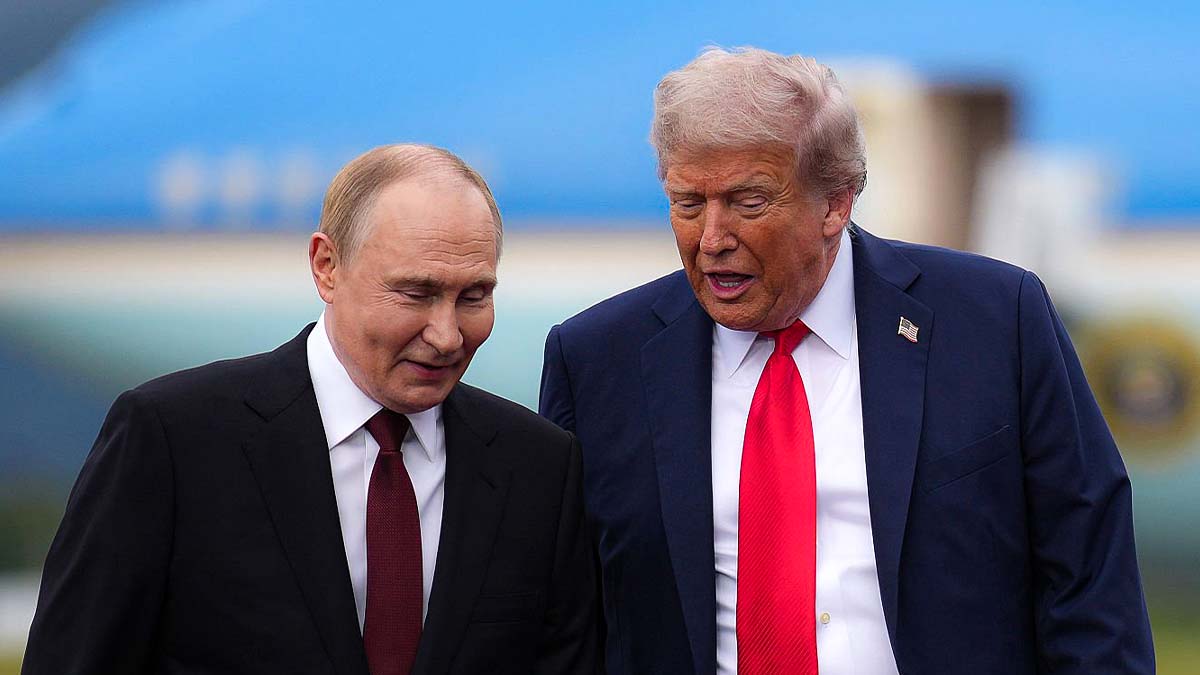In a bold geopolitical gambit that blends Cold War-era dreams with modern tech wizardry, a top Kremlin envoy has proposed constructing a massive undersea “Putin-Trump Tunnel” linking Russia and Alaska, explicitly calling on Elon Musk’s The Boring Company to make it happen. The $8 billion project, pitched as a “symbol of unity” amid thawing U.S.-Russia tensions, could revolutionize global trade routes—but skeptics warn it’s more propaganda than blueprint, fraught with seismic risks, environmental perils, and sanctions hurdles.
The idea surfaced late Thursday from Kirill Dmitriev, Russia’s Special Presidential Envoy for International Economic Cooperation and CEO of the Russian Direct Investment Fund (RDIF). In a viral X post, Dmitriev tagged Musk directly, envisioning a 70-mile (113 km) dual-track rail and cargo tunnel burrowing beneath the Bering Strait—the icy waterway separating Russia’s remote Chukotka Peninsula from Alaska’s western edge. “Imagine connecting the U.S. and Russia, the Americas and Afro-Eurasia with the Putin-Trump Tunnel—a 70-mile link symbolizing unity,” Dmitriev wrote, attaching conceptual diagrams showing service hubs on the Diomede Islands, just 2.4 miles apart and split between the two nations. He slashed traditional cost estimates from $65 billion-plus to under $8 billion, crediting Musk’s innovative tunnel-boring machines (TBMs) for halving timelines to eight years.
This audacious pitch landed hours after a pivotal two-hour phone call between President Donald Trump and Russian President Vladimir Putin, where the leaders greenlit a face-to-face summit in Budapest, Hungary, within weeks to hash out Ukraine peace terms. U.S. Secretary of State Marco Rubio is slated for preliminary talks with Russian counterparts next week. Dmitriev, who has cultivated ties with Trump’s Middle East envoy Steve Witkoff, framed the tunnel as a post-war olive branch: a gateway for joint Arctic resource ventures, including oil, gas, and minerals, potentially involving American energy giants in sanctioned Russian projects.
Trump, caught off-guard during a White House lunch with Ukrainian President Volodymyr Zelenskyy on Friday, called the notion “interesting” but hedged: “I’d have to think about that.” Zelenskyy, per reports, voiced clear displeasure, reportedly telling Trump he was “not happy about this” amid fragile ceasefire negotiations. Zelenskyy’s unease underscores broader Kyiv fears that flashy infrastructure lures could dilute U.S. leverage on Moscow’s Ukraine incursion, now in its third year.
Musk, the world’s richest man and a vocal Trump ally, has remained mum as of Saturday morning. His Boring Company has notched urban wins—like the 1.7-mile Vegas Loop ferrying convention-goers via Tesla vehicles—but an Arctic undersea mega-tunnel would dwarf those feats. The Bering Strait averages 130-165 feet deep, with peaks at 295 feet, amid permafrost, frequent earthquakes, and subzero temps that could snarl machinery. Experts peg landside upgrades—new rails, ports, and power grids in desolate terrains—at another $100 billion-plus, dwarfing the tunnel’s tab. No feasibility studies or environmental impact reports have surfaced, and U.S. sanctions on Russian tech imports could torpedo Musk’s involvement.
The proposal revives a century-old fixation. As early as 1904, Russian engineer V.I. Vize sketched a Siberia-Alaska rail; the Kremlin dusted it off in 2007 for a $65 billion bridge-tunnel hybrid, shelved amid the global financial crisis. Cold War whispers of a “Kennedy-Khrushchev World Peace Bridge” echoed similar vibes, per Dmitriev’s post. In the 2010s, China’s Belt and Road Initiative flirted with Eurasian extensions, but geopolitics stalled it. Now, with Trump eyeing deregulation and Putin courting investment post-Ukraine, the timing feels electric—especially after their August 2025 Anchorage summit, where Arctic ties thawed slightly.
Social media erupted, blending hype with hilarity. X user @TheWarMonitor quipped, “When I joked Putin would be given Alaska, I didn’t think they’d take it seriously,” alongside a mock map of the route. French influencer @VirginiePerez15 hailed it as a “Russia-USA heart” emoji fest, while @josettecaruso predicted “more positive publicity for [Musk] than ever.” Critics like @Peacemakerproje slammed it as a “geopolitical stunt with huge eco & security risks,” citing marine disruptions and potential military dual-use. Hashtags #BeringStrait and #PutinTrumpTunnel trended globally, amassing millions of views by dawn.
Proponents paint a transformative canvas: freight trains zipping Siberian minerals to North American markets, tourists hopping continents sans flights, and a high-speed artery knitting Eurasia to the Americas. Dmitriev touted RDIF’s track record, like Russia’s first rail bridge to China, as proof Moscow can deliver. For Musk, it’s a moonshot aligning with his interplanetary ambitions—Dmitriev even looped in prior invites for U.S.-Russia Mars collab. Trump, ever the dealmaker, might see it as a legacy win: brokering not just Ukraine peace, but a literal bridge between foes.
Yet detractors abound. Environmentalists decry Arctic fragility—melting ice, disrupted whale migrations, and quake-vulnerable bedrock. National security hawks fret over espionage vectors or troop movements in a tunnel spanning adversaries. And funding? Moscow’s war economy strains under sanctions; “international partners” sounds vague without Beijing or Gulf buy-in. As one analyst tweeted, “No impact studies, just vibes.”
As Rubio’s delegation preps for Moscow, the tunnel hangs in limbo—a shimmering mirage of détente or diplomatic smoke? If greenlit, it could etch history, fusing Trump’s “America First” with Putin’s Eurasian pivot via Musk’s drill bits. For now, it’s a conversation starter in Budapest’s halls. But in a world of proxy wars and proxy tweets, will words tunnel through to realit
